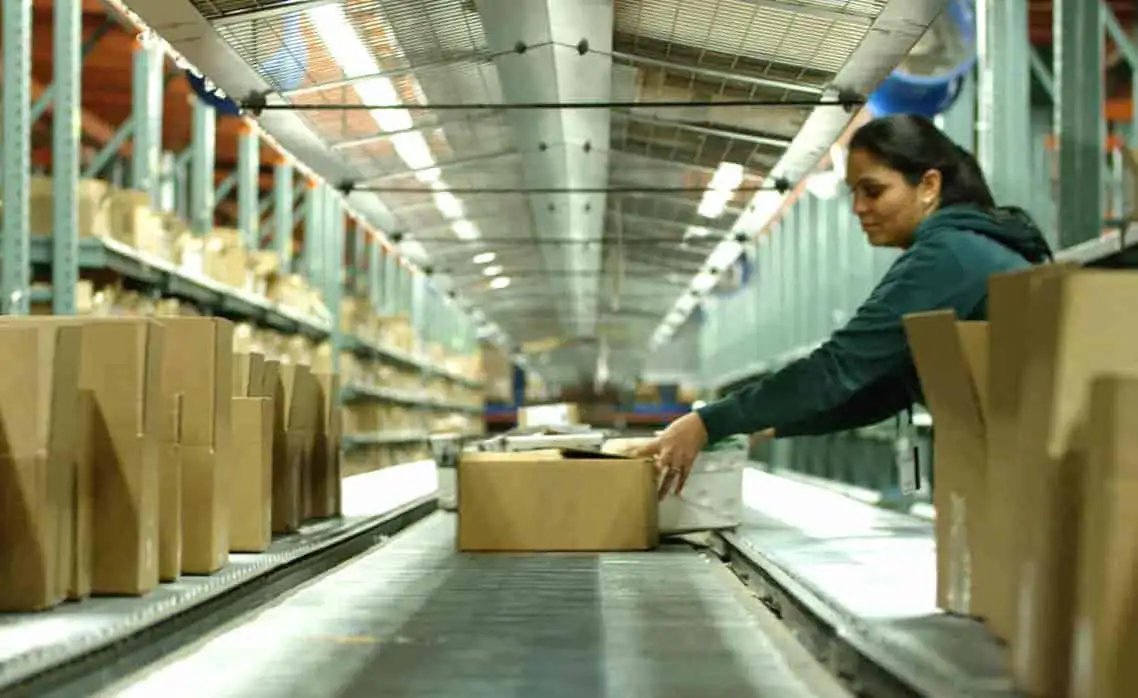Cross Docking Guide
Cross Docking Made Simple: A Guide for Supply Chains
Cross docking is one of the most efficient distribution methods in modern logistics, but it’s also one of the most misunderstood. In tight supply chains, the old model of storing goods in warehouses until needed can feel like dead weight. Traditional storage not only increases inventory holding costs but also slows time-to-market and complicates distribution. Today, shippers need faster, leaner ways to move freight. That’s where cross docking comes in.
Rethinking the Traditional Warehouse Model
Cross docking eliminates unnecessary storage by moving inbound shipments directly to outbound transportation with little or no dwell time in between. It’s a strategy that cuts costs, speeds up fulfillment, and creates a more responsive supply chain when executed correctly.
In this guide, we’ll walk through what cross docking is, how it works, the benefits and challenges, and when it makes the most sense for your business.
What Is Cross Docking?
Cross docking is a logistics practice that skips the storage step. Instead of receiving goods and putting them on shelves, a facility receives inbound shipments, quickly sorts and consolidates them, and sends them out for final delivery all within a short window of time.
- Cross docking meaning: a distribution strategy where goods are transferred from inbound to outbound transportation without long-term storage.
Common in retail, manufacturing, and temperature-sensitive supply chains, cross docking allows companies to move products faster, reduce handling, and trim warehousing costs. It’s not a perfect solution for everyone, but for the right operation, it can be a game changer.
How Cross Docking Works
The process begins when inbound shipments arrive at a cross-dock terminal. These goods are quickly unloaded, scanned, and sorted. In some cases, items are repackaged or consolidated with other products heading to the same destination. Then they’re immediately reloaded onto outbound trucks, often within a few hours.
The key is timing. For cross docking to succeed, outbound transportation must be closely synchronized with inbound schedules. The best cross docking operations include facilities that are equipped to handle high-volume throughput and rapid transitions.
But that’s what makes cross docking so powerful. With the right planning, it removes storage altogether, shifting freight from one mode to another as quickly and efficiently as possible.
How cross docking works in practice:
- Inbound shipments arrive at a central facility.
- Goods are unloaded and staged.
- Inventory is sorted based on outbound destinations.
- Items are consolidated (if needed) and reloaded onto outbound vehicles.
- Shipments leave for their next stop.
Types of Cross Docking and Their Applications
There are two primary types of cross docking:
Pre-Distribution Cross Docking: Inbound goods are pre-assigned to a customer or destination before arriving. This is common in retail, where merchandise is labeled and sorted by store at the vendor’s location, then sent to a cross-dock terminal for rapid transfer to outbound trucks.
Post-Distribution Cross Docking: Goods are sorted and assigned to destinations after arriving at the facility, often based on demand signals or updated forecasts. This method adds flexibility and is useful for managing inventory across dynamic markets.
Here are some examples of docking in action:
- Grocery chains consolidate produce from multiple farms into a single outbound load.
- Manufacturers receive parts from various suppliers for just-in-time delivery to the production line.
- Retailers bypass DC storage by cross docking seasonal items directly to stores.
The Benefits of Cross Docking
Cross docking offers a range of strategic and operational advantages for shippers seeking speed, efficiency, and cost control in their supply chains.
1. Faster Delivery Times
By eliminating long-term storage and moving products directly from receiving to outbound transport, cross docking significantly reduces order cycle times.
2. Lower Inventory Costs
With minimal storage involved, companies can maintain leaner inventory levels. This reduces capital tied up in stock, lowers the risk of obsolescence, and minimizes the need for large warehousing footprints.
3. Reduced Handling and Labor
In a cross docking warehouse, goods are handled fewer times—often just once upon arrival and again during outbound loading. This reduces labor costs and the risk of product damage caused by excessive handling.
4. Optimized Transportation
Cross docking allows for shipment consolidation and more efficient truck utilization. By coordinating inbound and outbound flows, businesses can reduce partial loads and increase full-truckload shipments, driving down transportation costs.
5. Increased Supply Chain Visibility
Most cross docking operations rely on technology for real-time tracking, scanning, and coordination. This results in improved visibility into inventory movement, fewer delays, and better alignment between supply and demand.
6. Greater Agility
Cross docking supports rapid response to changes in customer demand, seasonal volume spikes, and urgent restocking needs, making your supply chain more adaptable and resilient.
Planning and Preparing Cross-Docking Operations
Cross docking doesn’t work without planning. Shippers need to evaluate:
- Transportation schedules: Synchronize inbound and outbound trucks
- Inventory: Ensure consistent flow with products packaged for quick transfer
- Facilities: Design the right layout and dock space to avoid congestion
- Technology: Support real-time scanning, tracking, and routing with advanced systems
Effective cross-docking hinges on coordination between suppliers, carriers, and internal teams. A lack of planning can create bottlenecks and missed connections, turning what should be a seamless operation into a logistical nightmare. But with proper preparation, cross docking becomes a high-speed link in your supply chain, rather than a liability.
When to Use Cross Docking
Cross docking is ideal for businesses dealing with high-velocity SKUs, perishable goods, or seasonal surges. It works best when:
- Products are pre-packaged and ready for shipment.
- Inventory turns are high.
- Delivery speed is more important than storage flexibility.
- A consistent and predictable shipping schedule exists.
It’s especially valuable during market disruptions, when traditional warehousing becomes a bottleneck or when capacity is constrained.
Best Practices for Cross-Docking
Successful cross docking requires precision, discipline, and visibility. Start by implementing barcode scanning and RFID tracking to move goods through the facility quickly and accurately. Align inbound and outbound dock appointments with your transportation management system (TMS) so trucks arrive and depart on schedule.
Use dedicated staging areas to sort and consolidate freight efficiently, minimizing confusion and maximizing throughput. Training staff on the time-sensitive nature of cross docking is essential—they must know what to do, when to do it, and how to do it fast.
Finally, monitor key performance indicators such as dwell time, dock utilization, and order accuracy. Integrating your WMS, TMS, and ERP systems ensures a seamless digital backbone that supports speed, accuracy, and continuous improvement across your cross-docking operations.
Cross Docking vs. Warehousing
Traditional warehousing stores products for days, weeks, or months. Cross docking moves them through in hours. While warehousing provides storage flexibility, it also introduces higher costs, slower delivery, and increased inventory risk.
Cross docking minimizes handling, lowers inventory levels, and reduces labor and space needs. But it also requires higher coordination, tighter schedules, and tech-enabled visibility. The best strategy depends on your inventory profile, distribution goals, and customer expectations.
Technology & Infrastructure Required
Cross docking doesn’t work without the right systems in place. At minimum, you need a warehouse management system (WMS) that can scan, track, and direct the movement of goods from the moment they arrive. Barcode and RFID scanners allow fast, accurate reads of incoming products. Dock management tools streamline scheduling and help avoid congestion.
Equally important is your transportation management system (TMS), which integrates with WMS and ERP platforms to align inbound and outbound flows. Real-time alerts flag delays or exceptions, and data sharing keeps every stakeholder—from dock teams to logistics managers—informed. Investing in tech that supports your operation is essential to reaching the speed and precision cross docking demands.
Pricing and Cost Control
Cross docking can significantly reduce logistics spend when implemented correctly. By eliminating storage costs and minimizing touches, companies avoid the overhead associated with traditional warehousing—labor, space, and holding fees. But cost control doesn’t happen automatically.
To get the most value, shippers must optimize truck scheduling to reduce dwell time, maintain accurate labeling and documentation to prevent delays, and use cross docking facilities with proven throughput performance. Partnering with a 3PL that specializes in this model often adds pricing advantages through carrier consolidation, shared infrastructure, and economies of scale.
Choosing a Cross Docking Partner
The right cross docking partner will have proven multimodal capabilities, real-time visibility tools, and experience managing synchronized handoffs across suppliers, carriers, and facilities.
Look for a provider with strong network engineering, smart dock layouts, and integrated systems that can support your existing supply chain. Bonus points for flexibility—your needs may change seasonally or by product type. A reliable cross docking partner makes your operation more responsive, resilient, and scalable.
Common Pitfalls and How to Avoid Them
Even well-designed cross-docking programs can run into trouble without attention to detail. One of the most common issues is poor timing between inbound and outbound loads. If trucks arrive late or early, or if freight isn’t pre-staged and sequenced properly, it causes congestion, delays, and missed connections that ripple through the supply chain.
Facility constraints also create friction. Without enough dock doors or designated staging areas, operations can bottleneck quickly, especially during peak shipping periods. In these environments, manual processes amplify the risk: paperwork gets misplaced, labels go missing, and teams lose track of inventory in motion.
To avoid these pitfalls, build your operation on a foundation of integrated systems, process discipline, and agile coordination. Use barcode or RFID scanning to track goods in real time, align transportation schedules through a centralized TMS, and create clearly defined workflows for exception management. The most successful cross-docking programs are fast, predictable, and resilient despite wavering external factors.
Use Cases & Applications
Cross docking is used across many industries:
Retailers rely on it to move seasonal items or promotional displays quickly from supplier to store, bypassing DC storage.
Grocery and food distributors use it to manage perishable inventory and reduce shelf replenishment times.
In manufacturing, cross docking supports just-in-time (JIT) delivery of components that go straight from truck to assembly line.
E-commerce companies are also embracing cross docking to improve final-mile performance—staging shipments closer to customers for faster delivery without adding inventory.
Pharmaceutical and healthcare distributors use cross docking to ensure temperature-sensitive goods reach their destinations on time and in compliance.
Automotive supply chains use it to align just-in-sequence component delivery to assembly plants. Even industrial suppliers benefit by reducing turnaround time on replacement parts and equipment.
Any operation that values speed, lower carrying costs, and operational agility can benefit from a well-designed cross docking strategy.
Making the Leap: Is Cross Docking Right for You?
Cross docking can transform your supply chain from a reactive, storage-heavy model into a lean, velocity-driven engine. For businesses looking to boost throughput, reduce holding costs, and respond faster to shifting demand, it offers measurable advantages. But unlocking those benefits demands strategic design, synchronized execution, and technology that supports every handoff.
As a proven leader in supply chain innovation, Legacy SCS specializes in end-to-end logistics operations designed to scale with your business. Whether you’re integrating cross docking into a single facility or deploying a multi-node strategy across North America, we can engineer a flexible, high-performance solution specific to your operation.
We tailor cross-docking programs to your product mix, delivery windows, and service requirements with a high-tech, high-touch model that blends advanced systems with skilled teams. So you get real-time control, consistent execution, and seamless alignment between suppliers, carriers, and customers.
Get In Touch with a Legacy Expert Today
FAQs
Q: What kind of products are best suited for cross docking?
A: High-volume, pre-packaged, or time-sensitive items such as groceries, consumer electronics, promotional goods, or parts for manufacturing lines. These items often arrive pre-packaged or palletized and are ready for outbound shipment with little additional processing.
Q: Is cross docking better than traditional warehousing?
A: It depends on your supply chain needs. Cross docking reduces dwell time and lowers costs for fast-moving goods, but it lacks the storage flexibility of warehousing. If you have slower-moving products or unpredictable demand, warehousing may be a better fit.
Q: Can I use cross docking with imports or exports?
A: Yes. Cross docking is often used in international logistics to stage inbound ocean containers for final delivery, or to consolidate outbound exports for departure. It shortens port dwell times, reduces handling, and keeps freight flowing efficiently across borders.
Q: Does cross docking require special infrastructure?
A: Yes. Successful cross docking requires a purpose-built facility with multiple dock doors, staging areas, and integrated WMS/TMS systems for visibility and speed. Without the right infrastructure, it’s difficult to keep freight moving at the pace cross-docking demands.
-
Legacy Achieves Platinum Status for Delivery Excellence From Amazon
When it comes to supply chain performance, the margin for error is razor thin. Customers expect orders to arrive quickly, accurately, and...
+ Read more -
IPS Corporation selects Legacy as 3PL Partner to drive Supply Chain Transformation
FRANKLIN, IN | September 10th, 2025 – Legacy SCS announced that it has been selected by IPS Corporation, a global leader in Water...
+ Read more -
How GForce Transformed Its Supply Chain Into a Powerful Growth Engine
When GForce Arms launched in 2020, the mission was simple but ambitious: deliver affordable, reliable firearms with the speed and...
+ Read more



